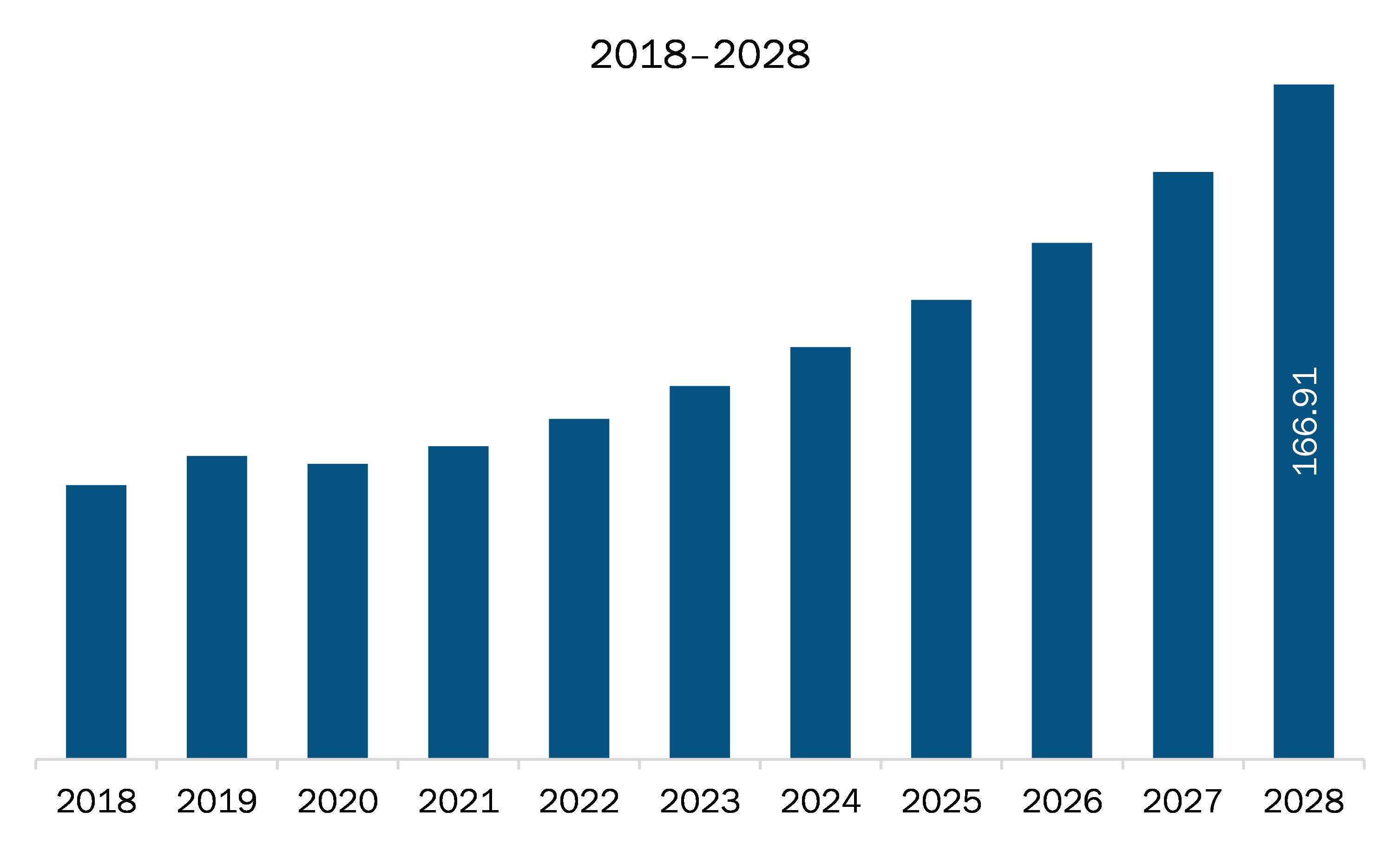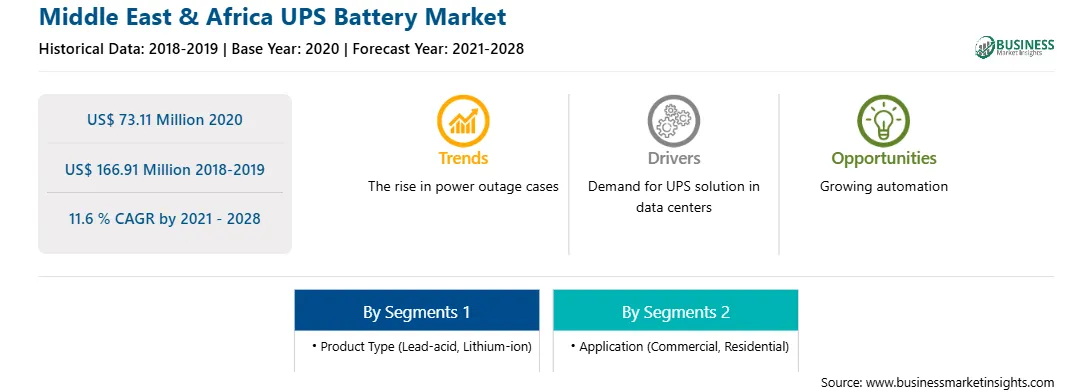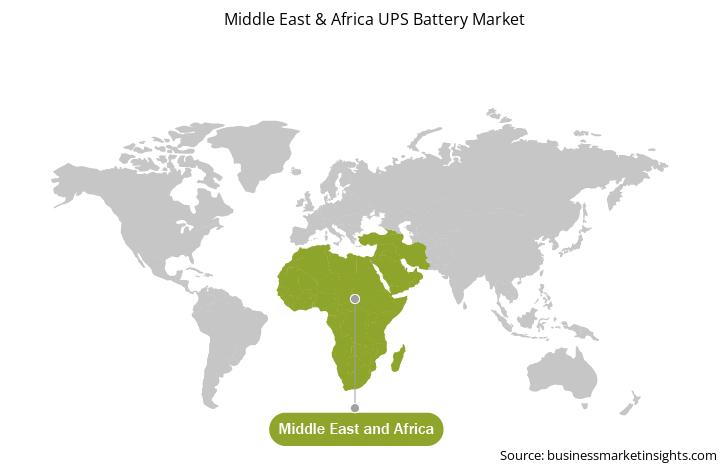The MEA is projected to have a rapid rise in urbanization, which would further drive its economic growth. The Gulf countries are economically advanced, while the African countries are yet to match up to their economic conditions. Rise in per capita income, recovery in economic conditions, and increasing government spending toward smart grid and data center infrastructure development are among the factors driving the adoption of UPS batteries in the Middle East and Africa. The construction and infrastructural industries in the Middle East and Africa are witnessing high growth. Countries in the Middle East are engaging themselves in various global events, which are leading to the development of infrastructure and strengthening of economies. In addition, MENA countries are also expected to attract plenty of foreign investments in their infrastructure and construction industries. The constantly increasing population of the region is likely to raise the need for housing and other residential infrastructure. According to the United Nations Department of Economic and Social Affairs, Africa is anticipated to account for over half of the world’s total population growth during 2015–2050. Thus, growth in the construction industry in the region would boost the demand for UPS batteries to provide better energy management, especially across the residential sector. Furthermore, according to the Energy & Utilities Market Outlook Report 2020, smart grid investments in the region are estimated to reach US$ 17.6 billion during 2021–2027. Such investments are encouraging the smart grid development activities, thus creating enormous opportunities UPS battery manufacturers to further enhance their foothold in the region.
Furthermore, in case of COVID-19, Turkey, Iran, and South Africa have faced the highest cases. Other major countries facing the economic impact of COVID-19 include Iraq, Israel, Morocco, Saudi Arabia, and UAE. The MEA UPS battery market is majorly affected by the disruption in the supply chain. Pertaining to the closure of borders of countries, the supply chain of several component has been disturbed. The demand for UPS batteries for power back up in various sectors has declined during the lockdown period. This has resulted in a loss of business among the UPS battery market players offering their products to respective customers in the MEA. The region comprises of many growing economies such as UAE and Saudi Arabia, among others, which are prospective markets for UPS battery providers, due to the huge presence of diverse customer base. The global COVID-19 pandemic has significant effects on global economies, but the region is already impacted as there is pressure on economy of various oil-based countries due to falling oil prices. In addition to this, the factory lockdowns, business shutdowns and travel bans are further aggravating the economic problems of the countries in the MEA. Hence, the estimated decline in MEA’s economic condition and impact of COVID-19 on growth of various industries in the region is expected to negatively impact the growth of UPS battery market till mid-2021.

Strategic insights for the Middle East & Africa UPS Battery provides data-driven analysis of the industry landscape, including current trends, key players, and regional nuances. These insights offer actionable recommendations, enabling readers to differentiate themselves from competitors by identifying untapped segments or developing unique value propositions. Leveraging data analytics, these insights help industry players anticipate the market shifts, whether investors, manufacturers, or other stakeholders. A future-oriented perspective is essential, helping stakeholders anticipate market shifts and position themselves for long-term success in this dynamic region. Ultimately, effective strategic insights empower readers to make informed decisions that drive profitability and achieve their business objectives within the market.

| Report Attribute | Details |
|---|---|
| Market size in 2020 | US$ 73.11 Million |
| Market Size by 2028 | US$ 166.91 Million |
| Global CAGR (2021 - 2028) | 11.6 % |
| Historical Data | 2018-2019 |
| Forecast period | 2021-2028 |
| Segments Covered |
By Product Type
|
| Regions and Countries Covered | Middle East and Africa
|
| Market leaders and key company profiles |
The geographic scope of the Middle East & Africa UPS Battery refers to the specific areas in which a business operates and competes. Understanding local distinctions, such as diverse consumer preferences (e.g., demand for specific plug types or battery backup durations), varying economic conditions, and regulatory environments, is crucial for tailoring strategies to specific markets. Businesses can expand their reach by identifying underserved areas or adapting their offerings to meet local demands. A clear market focus allows for more effective resource allocation, targeted marketing campaigns, and better positioning against local competitors, ultimately driving growth in those targeted areas.

The MEA UPS battery market is expected to grow from US$ 73.11 million in 2020 to US$ 166.91 million by 2028; it is estimated to grow at a CAGR of 11.6 % from 2021 to 2028. Mounting advantages of UPS battery in data center will escalate the MEA UPS battery market. Due to the rising data related services, there has been a huge increase in demand for data centers, which is driving the demand for UPS. Cloud-based services require to be online to provide services, which is surging the need for UPS systems. The growing trend of cloud computing and virtualization has led to a rise in data centers. The rising colocation providers across the MEA region are highly inclined toward remodeling their data center UPS solutions and speeding up their IT processes to meet the customer demand for rapid data delivery; thus, propelling the demand for data center UPS solutions. The life expectancy of a UPS in a data center is ~10–15 years. Lead-acid battery works for ~3–6 years, while lithium-ion battery lasts ~10 years or longer. Due to such advantages of UPS battery, companies are highly focused on designing advanced battery systems for data centers. Thus, the growing deployment of UPS battery for data centers, owing to its numerous advantages such as high energy efficiency, high performance, and lightweight, is compelling the MEA UPS battery market growth.
In terms of product type, the lead-acid segment accounted for the largest share of MEA UPS battery market in 2020. In terms of application, the commercial segment held a larger market share of the MEA UPS battery market in 2020.
A few major primary and secondary sources referred to for preparing this report on the MEA UPS battery market are company websites, annual reports, financial reports, national government documents, and statistical database, among others. Major companies listed in the report are Eaton Corporation plc, Exide Industries Limited, FIAMM Energy Technology S.p.A., leoch International Technology Limited Inc, Schneider Electric SE, and Vertiv Group Corporation.
The Middle East & Africa UPS Battery Market is valued at US$ 73.11 Million in 2020, it is projected to reach US$ 166.91 Million by 2028.
As per our report Middle East & Africa UPS Battery Market, the market size is valued at US$ 73.11 Million in 2020, projecting it to reach US$ 166.91 Million by 2028. This translates to a CAGR of approximately 11.6 % during the forecast period.
The Middle East & Africa UPS Battery Market report typically cover these key segments-
The historic period, base year, and forecast period can vary slightly depending on the specific market research report. However, for the Middle East & Africa UPS Battery Market report:
The Middle East & Africa UPS Battery Market is populated by several key players, each contributing to its growth and innovation. Some of the major players include:
The Middle East & Africa UPS Battery Market report is valuable for diverse stakeholders, including:
Essentially, anyone involved in or considering involvement in the Middle East & Africa UPS Battery Market value chain can benefit from the information contained in a comprehensive market report.